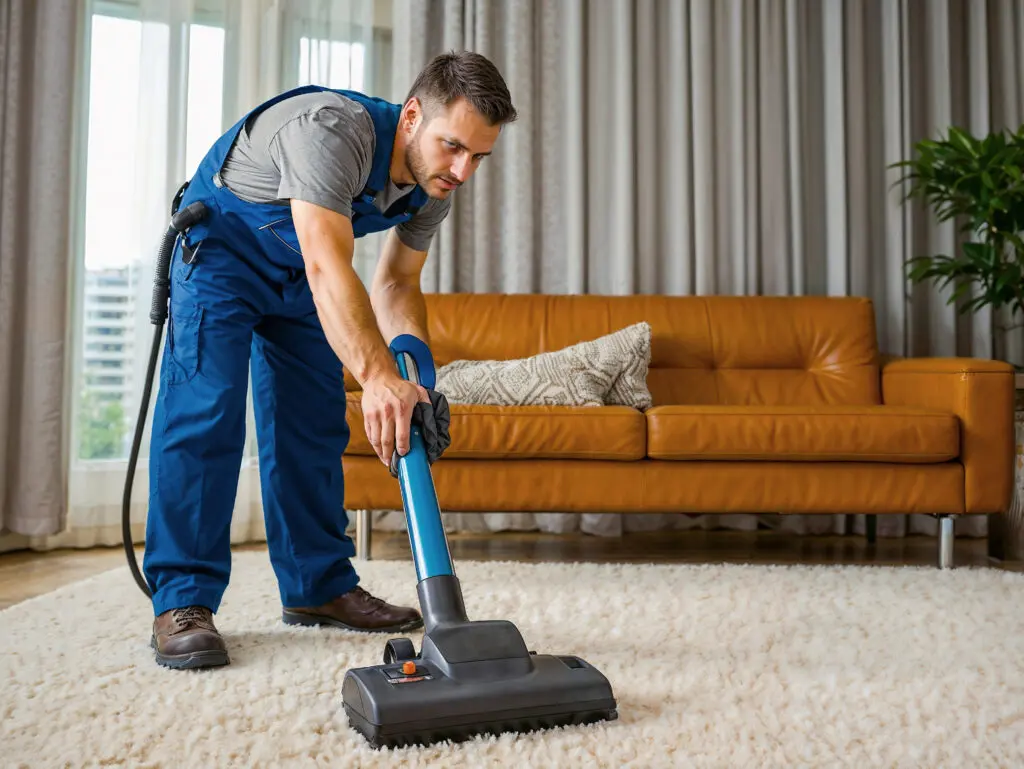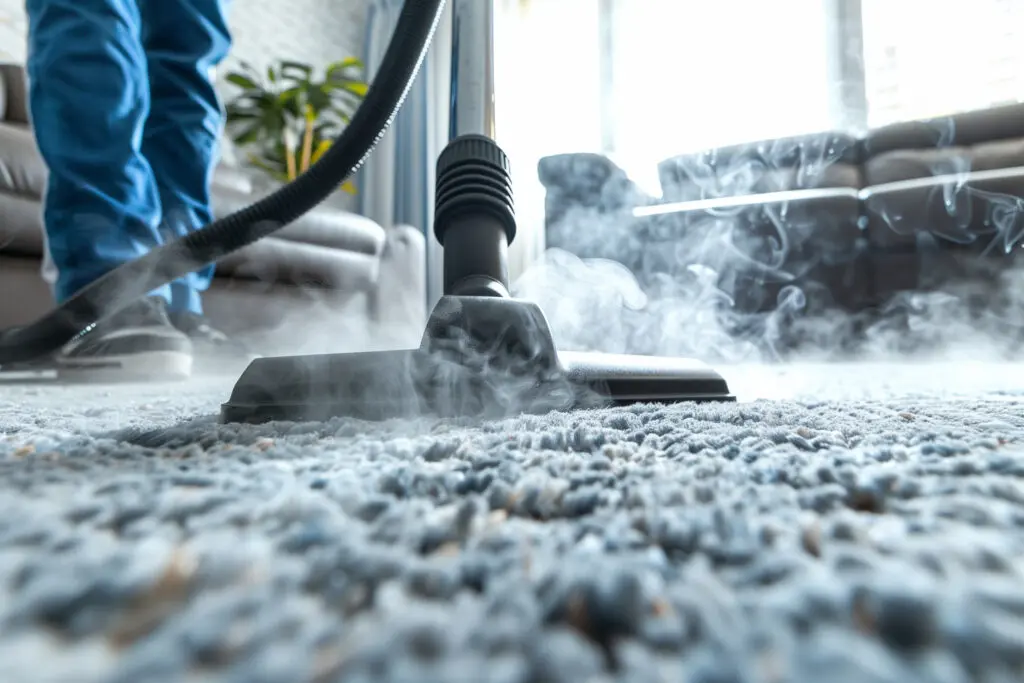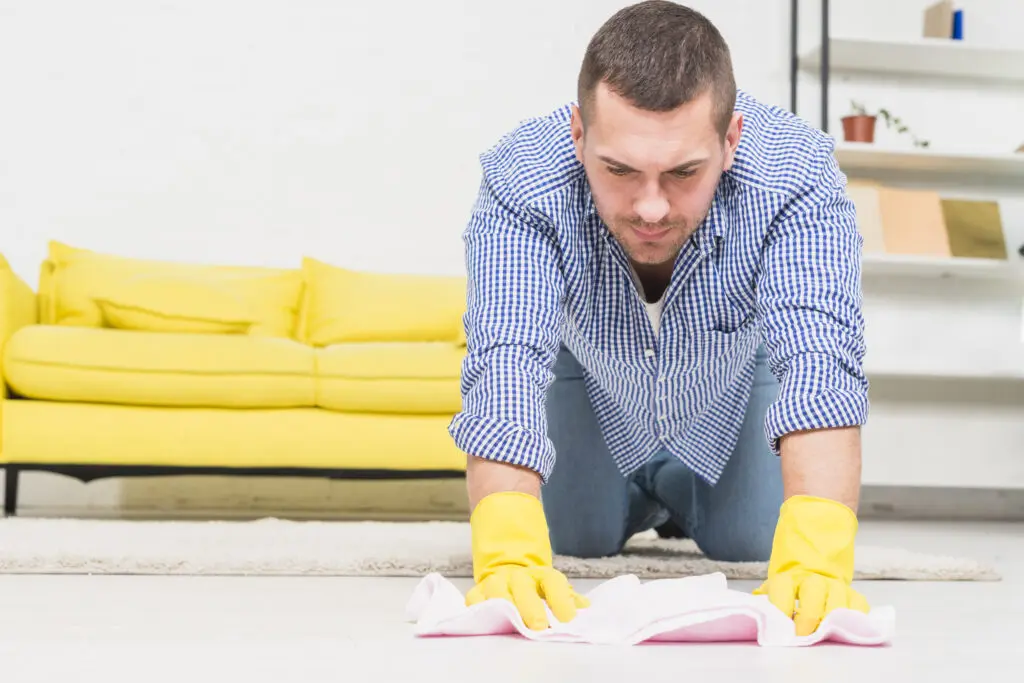The facts & misconceptions about urine contamination in carpet
By: Darrell Thomas
Founder of Carpet Pros, Charlotte, NC.
It is a fairly common misconception that having the carpet “cleaned” removes urine from the carpet & will thus solve the persistent & troublesome odor issue. Nothing could be farther from the truth & here’s why.
It is important to understand that when urine is deposited onto the carpet, as it dries it leaves behind a residue which quickly leads to the formation of bacteria within the contaminated area.
Any time moisture is present in that area, this causes the bacteria to become “active”, which is when you may notice an odor. When the area dries out, the bacteria then become “dormant”, which means the odor may not be noticeable… That is until moisture is re-introduced to the area. When this happens, not only does the existing bacteria become active, but new bacteria are formed, which means the problem becomes even larger, and the odor within the home can become more noticeable over time.
This moisture could be from something as benign as a hot or humid day, a wet rainy day, or yes, from having the carpet cleaned. This means that the act of “cleaning” the carpet can actually lead to the formation of additional bacteria, making the odor issue much worse, with the bacteria literally growing like rings on a tree, larger & larger over time.

So, how is the issue solved?
The first step to solving a urine contamination issue is a complete and thorough inspection of the carpeted area. It is important to point out that the carpet cleaning industry as a whole is simply not well informed enough to properly inspect and diagnose most urine contamination issues, which is unfortunate & regrettable.

You see the vast majority of cleaners do not know how to determine where within the home urine contamination has occurred and, in most cases, rely on the homeowner to tell them where their pet has had an accident. They wrongly assume that all urine deposited onto the carpet will leave a visible stain. For this reason, urine contamination and odor elimination are a frustrating hit and miss proposition.
At Carpet Pros, we approach urine contamination detection from a scientific / forensic approach which begins by educating our technicians on how to professionally inspect & diagnose every carpeted area for urine contamination.
The foundation of a thorough and complete inspection is the proper use of two important tools, a very powerful ultraviolet light and a moisture detector.
The only reliable way to determine if or where within the home there is urine contamination present is via the use of an ultraviolet light.
This is because areas contaminated by urine fluoresce “green” under ultraviolet light. The presence of areas on any surface which fluoresces green under ultraviolet light means that, at some point, urine has been deposited in that area.
This is not an opinion, rather it is a fact. If it fluoresces green under ultraviolet light, it is because there is urine present.
I point this out because some, when this is revealed to them, want to debate, insisting that the stain must be from some other source. Rest assured, this is unambiguous and undebatable.
Many of us may have used UV light to detect urine which has been deposited on carpet or upholstery, but why does it fluoresce green under the UV light?
It is prudent to note that urine itself does not fluoresce under ultraviolet light, however there is Phosphorus present in all urine which does fluoresce, and the presence of Phosphorus reveals the presence of urine. Phosphorus fluoresces because it chemically alters any porous surface, such as carpet fibers leaving behind a greenish tint, though it is not visible to the naked eye, only under ultraviolet light.
Once we have detected the presence of urine, (via the presence of Phosphorus) with the UV light, we then use the moisture detector to determine the depth of the contamination.
By depth I mean, is the urine contamination confined to the fibers of the carpet, has the contamination gotten into the backing material, or has the urine penetrated into the padding or even the sub-floor.
It is important to note that when we use the moisture detector, we are not actually looking for “moisture”. This is because the carpet is most likely to be dry if the urine was deposited onto the carpet weeks or even months earlier, so why are we using a moisture detector?
A moisture detector works by detecting anything which conducts electricity.
I mentioned earlier that urine, when it is deposited onto carpet and dries it leaves behind a residue and this residue quickly forms a “salty” film which also conducts electricity. This is evidenced when we simultaneously touch the two probes of a moisture detector, it is activated, in this case by the salt in our skin.
So, with the aid of these two devices, we are able to first determine “where” urine has been deposited onto your carpet and then we can easily determine the “depth” of contamination. Meaning is the contamination limited to the fibers of the carpet, has the urine bled down into the backing material, or worse, has the urine contamination gotten into the carpet padding or even the sub-floor.
The information we glean from this inspection process allows us to determine exactly what course of action is required to solve even the most difficult urine contamination issues.
This means that we are not guessing and can, with the implementation of the proper procedure, guarantee complete removal of the urine contamination, as well as the associated negative odor within your home.
So, what is the correct procedure ?
With urine contamination, there are 3 different approaches depending on the depth of the contamination.

If the urine is confined to the fibers of the carpet & backing material, we can perform a “topical” treatment. If the urine contamination has breached the backing material and has bled into the padding, though in a relatively small area, we can, in most cases, perform a “sub-surface extraction” process. However, if the contamination has bled into the padding over a larger area, a “3-layer” treatment may be required.
Let’s look at these three different processes in detail.
Topical Treatment:
This is by far the most common urine treatment. It is highly effective when urine is present within the fibers of the carpet but has not breached the backing material and bled into the padding.
A topical urine contamination treatment is where we spray the contaminated areas with a propriety solution in sufficient quantity to eliminate the odor causing bacteria. After allowing the product to dwell withing the carpet, the area is then extracted & rinsed, to remove the urine residue, leaving the carpet clean and bacteria & odor free.
Sub-Surface Extraction:
This process is necessary when the urine contamination has breached the carpet’s backing material and has bled into the padding.
The proprietary solution is applied in sufficient quantity to allow the product to soak into the carpet padding, saturating the area which has been contaminated with urine. The product is then allowed to dwell long enough to ensure elimination of the odor causing bacteria.
Next, via the use of a sub-surface extraction device we are literally able to wash & rinse the carpet and padding, down to the sub-floor and are able to remove of all urine residue, leaving the area clean and bacteria & odor free and as dry as possible.
** Note that a Sub-Surface Extraction process cannot be performed if you’re home has ‘moisture barrier” or “pet barrier” padding due to the plastic film on the surface of the padding witch limits essential airflow which then limits ability to fully rinse the area.
3-Layer Treatment:
This process is called a 3-layer treatment because it treats the carpet, padding and sub-floor, and is obviously quite involved. We literally do not know of another carpet cleaning provider within the Charlotte area who provides this service.
It goes kind of like this…
The carpet is pulled back in the area which has become contaminated with urine. Many times, we must have a carpet repair technician on site to open seams at thresholds to closets, hallways or adjacent rooms.
With the carpet pulled back, we then remove and dispose of the contaminated padding, revealing the sub-floor. If the sub-floor is concrete, we would rinse the area to remove all urine residue. If the sub-floor is wooden, we would seal the entire contaminated area with an odor-blocking primer, literally painting it on. This cuts off the oxygen to the bacteria, which permanently eliminates it.
With this completed, we rinse, clean & treat the contaminated carpet backing, install new carpet padding and professionally re-install the carpet.
Once the carpet has been re-installed, we clean, rinse & treat the pile of the carpet, completing the process.
This process is highly effective at eliminating any and all urine contamination from the treated area, leaving it clean, sanitary & odor free.
Many times, homeowners believe they will have to suffer the expense of purchasing new carpeting, however employing this process can save that inconvenience and expense.
Other issues to be aware of:
** Because the greenish “stain” which is reflecting or fluorescing under a UV light is not actually caused by urine, rather Phosphorus which is within the urine, and the Phosphorus has chemically altered the carpet fibers, the greenish tint will always remain, even long after the urine has been treated and removed. There is no process to remove the Phosphorus from the carpet and it will always fluoresce under ultraviolet light.
** Urine can easily contaminate more than just carpet. This includes upholstery, bedding, baseboards and drywall. We have even encountered homes which have had urine contamination to such an extent that the persistent odor required the HVAC system to need treatment.
Failure to adequately diagnose and treat these areas can cause the area and the entire home to continually smell of urine.
Unfortunately, the vast majority of carpet cleaners are simply not up to speed with the “science” of how to diagnose and treat anything other than the most basic urine contamination issues.
The good news is that over the past three decades, Carpet Pros has pioneered many of these extensive urine contamination treatment processes we describe here. We are routinely called upon to solve urine contamination issues which other cleaners have misdiagnosed, mistreated and or walk away from.
Let us know how we can help !!
Is there a difference between treating urine odor & removing urine stains?

Absolutely !!
Many homeowners, and believe it or not, even seasoned carpet cleaners incorrectly assume that the same process which eliminates the odor causing bacteria from urine will also remove the yellowish stain left behind by urine.
Removing the odor causing bacteria and removing stains caused by urine are two completely different processes which boil down to chemistry, and the chemistry for solving each issue is completely different.
For example, as mentioned, the typical process to remove urine odor is to eliminate the bacteria which is the actual source of the odor. This is most typically accomplished by first rinsing the affected area to remove the ‘salty’ urine residue from the carpet fibers and then the application of a solution which is designed to kill or eliminate the bacteria.
Once this process is complete, and a stain remains, the use of an oxidizer, or peroxide based product is most commonly used to lighten the yellowish residual staining. It is important to note that pet urine stains can be extremely difficult to remove and can often be permanent.
There are a multitude of factors which play into the ability to remove stains on carpet caused by urine, such as the carpets fiber type. Is your carpet constructed of Nylon, Polyester, polypropylene, or even Wool. The age of the carpet is important, how long since the last cleaning, what process was employed for the last cleaning, was a quality protector reapplied after the cleaning.
Other factors can contribute to the stain’s ability to be removed also include, was an over-the-counter product used in an ‘in-home’ attempt to remove the stain, how long the urine has been in the carpet, was the stain caused by a dog or cat, is there medication or vitamins present within the urine, even the sex of the animal can be a determining factor.
The above factors are why urine stain removal can be very unpredictable or even impossible to achieve.
The bottom line is that the most important factor in keeping your carpet looking its best is accomplished by timely & proper maintenance of the carpet by a well informed and seasoned professional provider such as Carpet Pros.
